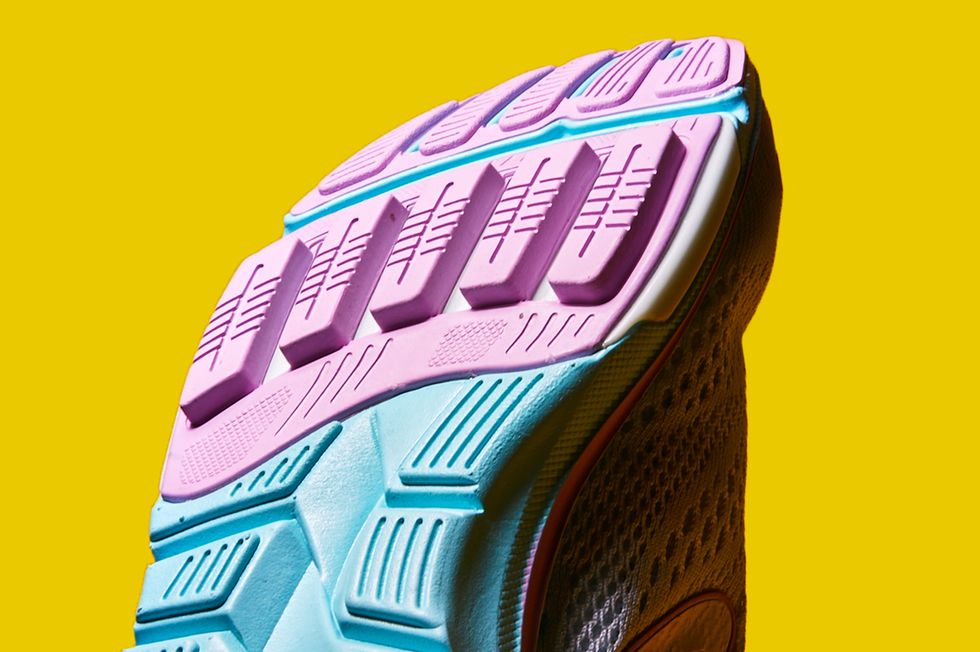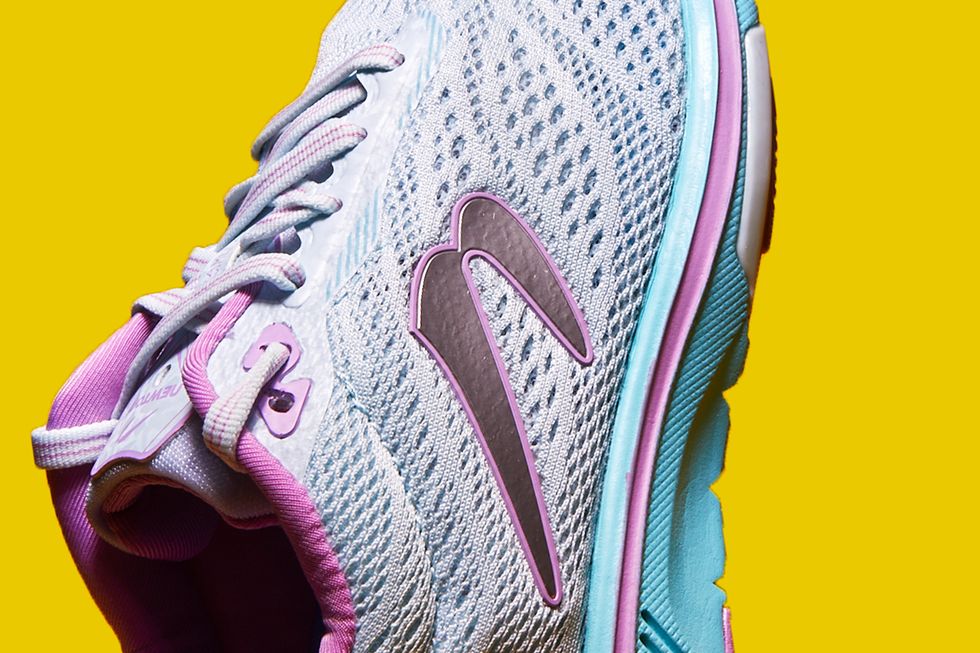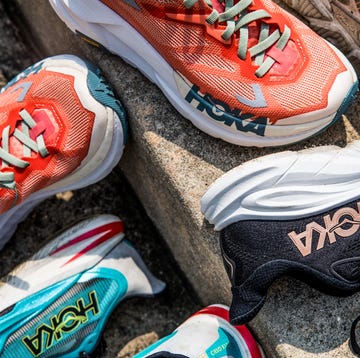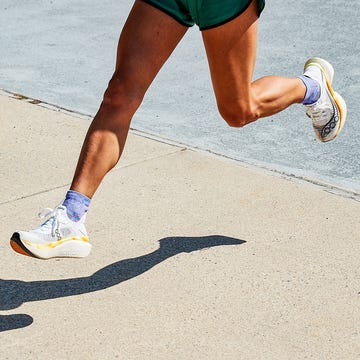The RW Takeaway: Newton’s polarizing forefoot lugs still pose a learning curve for some; midfoot strikers and runners already accustomed to lower-drop shoes may adapt to the design more quickly. A peppy ride, good energy return, and a crazy-comfy upper make the transition worthwhile.
- Upper mesh and lacing are 100% recycled.
- Forefoot lugs paired with a new midsole foam respond well for speedwork and tempo runs.
- New midsole plate is now sustainably built from castor beans, but doesn’t lose any durability or responsiveness.
Price: $190
Weight: 8.5 oz (M), 7.0 oz (W)
Drop: 3 mm
Buy Men’s Buy Women’s More Images
Newton’s forefoot lugs can sometimes feel like the elephant in the room. If they’re effective, why haven’t other brands adopted the design as eagerly as tech like carbon-fiber plates? The answer is two-fold. For one, Newton has heavily patented its lugs—like any smart company would for its “secret sauce.” The second reason is quite different. Unlike a time-tested family recipe or the Colonel’s special mix of herbs and spices, these lugs require some extra effort from the user. (And even then, they just don’t appeal to every runner.)
It usually takes an adjustment period to Newton shoes before you really reap the benefits, and some of us would rather get to it right out of the box. Of course, there’s nothing wrong with that. However, most testers who gradually incorporated the Gravity+ into their shoe rotation were glad they did. “The lugs add some cushioning and a forward-propelling feel that my other shoes can’t offer,” one tester said. “Although the Gravity+ doesn’t seem super cushiony and plush, the lugs do absorb a lot of the shock. During regular tempo and speed intervals, these shoes helped me pick up my feet and felt responsive and reactive to my stride.”
A Big Plus for the Planet
As Newton’s flagship model, the Gravity has been a solid case for consistency in the brand’s midsole cushioning. Testers have long noted the punchy combo of the five forefoot lugs (one for each metatarsal) and a layer of lightweight EVA foam. For the “plus” model, Newton tweaked the midsole formula for even more rebound, and also added EcoPure to the foam. When you’ve retired your pair to the big oval in the sky, this organic compound attracts naturally occurring microbes to biodegrade the shoes more quickly.
New Materials, Familiar Ride
The new eco-friendly foam houses a sustainable midsole plate that adds structure to the forefoot lugs. Precision-sculpted from castor bean-based polymers, it lends a pinch more spring than the shoe’s formerly-used plate, but overall the ride isn’t wildly different from previous iterations of the Gravity. We found the major boost here is in sustainability, rather than energy return.
Words From Our Wear-Testers
Ben R. | Tester since 2015
Arch: Flat | Pronation: Neutral | Footstrike: Forefoot
Typical Weekly Mileage: 45
“The Gravity+ gave me a unique and different experience than most running shoes. I liked how much energy return these shoes offer—this shoe really does have some pop to it and gives you a nice reaction off the ground, mile after mile. The Gravity+ promoted a midfoot/forefoot strike and helped me increase my cadence, even on easier efforts. When I picked up the pace they were right there with me and felt fast and stable. It definitely takes some getting used to, considering the lugs are right under your forefoot. But honestly, after a couple runs, I almost forgot about them. The lugs really do help you get into a nice stride and assist you in pushing off the ground. Being a midfoot/forefoot striker, I really felt a boost, and found the shoe extremely versatile. It handled various types of runs in my training well: easy runs, long runs, speedwork, and some tempo miles.”
Kayte F. | Typical Weekly Mileage: 20
Arch: Medium | Pronation: Neutral | Footstrike: Midfoot
Another Shoe Kayte Likes: Topo Athletic Phantom 2
“During my first three runs, I was not a fan of these shoes. I continued running in them because I knew it would take some time to adjust. I ran shorter, more frequent distances (two to four miles at a time), and I began to focus more on improving my form. Initially, I ran much slower in the Newtons and hitting my usual 9:30 pace was challenging; the shoe’s lower drop made my calves and ankles do more work. My pace improved the more I ran in the Gravity+ and I liked that the shoe encouraged me to maintain a midfoot strike and fine-tune my form. I know that ultimately this can lead to fewer injuries and faster speeds. I wouldn’t wear the Gravity+ for a long-distance race, but I’ll keep them in my toolbox for three-mile runs, three times per week to practice proper form.”

Morgan is a gear editor who has been with Runner’s World since 2017. She started as an intern ghostwriting The Warmup, a bygone version of the daily RW newsletter. Now, she tests and reviews anything you might find on runners’ feet-from crew socks and compression boots to carbon-plated super shoes.
A lifelong runner and shoe geek, Morgan has been chasing the perfect pair of kicks since she joined her grade school cross-country team. Since then, she ran as a Division I walk-on for the cross-country and track & field teams at the University of Delaware, where she studied English and Biology. She has one full marathon under her belt, and has raced more halfs and 5Ks than she can count.
















